Matagi Akita Tohoku Sustainable Living
A chilly breeze runs through the deep forests of Mt. Moriyoshi, signaling the coming winter for the Matagi. Ani Village is said to be the spiritual home of the Matagi, Akita’s traditional bear hunters who follow 400-year-old sacred rituals for living and hunting in the rugged northern mountains.
Legend has it that a young hunter saved a mountain goddess from another deity that had taken the form of a giant snake. He was rewarded with a scroll granting him and his descendants the right to hunt throughout Japan.
The name “Matagi” is said to have many meanings and origins, and its culture shares many similarities with the Ainu of Hokkaido. For example, in the Ainu language, matangi or matangitono means “man of winter” or “hunter.” The name is also said to depict the abundance and nature of the four seasons. The Matagi practice kebokai, a ritual to give thanks for the bear and return it to its ancestors, similar to the Ainu iyomante bear sacrifice. They practiced sustainability and zero waste long before these buzz words became ubiquitous with marketing professionals.
The Matagi continue to treat their hunting grounds with awe and respect. Before every hunt, they go to the temple to pray for protection and offer morobi made of fir branches. The morobi is smoked; its scent is said to ward off impurities and evil and remove the smell of the village from the hunter’s body.

When hunting a bear, the Matagi enter the forest, usually in a group of eight, and work together to track and hunt the creature. This can take up to twelve hours. Apart from the rifle, they also use traditional tools like the nagasa, a machete-knife tool, and kanjiki, traditional snow shoes made out of straw and ropes. The bear is killed as swiftly as possible, usually in one shot, so as to cause the least suffering. Its meat is divided equally between the hunters and part of its intestines is left as an offering to the mountain. Every part of the bear is used and the Matagi never hunt more than needed.

There used to be around 120 Matagi in the Moriyoshi area of Ani Village. Today, that community has dwindled to 20, mostly elderly hunters. The youngest member of the group is the enterprising Hideyuki Oriyama. The 38-year-old Matagi was born and raised in Akita, and like most Japanese youths, moved to Tokyo for work and to pursue a career in video production.

During the 2011 Tohoku earthquake and tsunami, Oriyama struggled to find basic needs like diapers for his then three-month-old daughter; his parents in Akita sent them diapers and food for a month. He quickly realized Tokyo didn’t have its own resources and within four months, he packed up his family and went back to Akita.
When he returned, a friend introduced him to Kaiko no Mori, a novel about the Matagi. Curious about this culture and how close it was to home, Oriyama arranged to walk the mountains with a Matagi guide. He was so inspired by this traditional lifestyle, he chose to try and become a Matagi himself.
“Matagi culture is something you learn and experience by being part of the community and learning from other Matagi,” says Oriyama. “There isn’t any course or certificate, or any point where they suddenly announce that you’re a Matagi.”

Becoming a Matagi means it affects your everyday life: living self sufficiently, being careful, focusing on exact in movements, understanding the mountains and nature, and most importantly, revering the spirituality. Oriyama experienced this first hand on his first hunt.
“After hours of tracking, we finally found the bear. We were ten meters apart; I was so nervous staring into its face. Just then, the bear turned its head away and angled the back of his neck at me. I felt like it understood what was going on, and gave me permission to shoot,” remembers Oriyama. “I felt very thankful and was in awe at the power of nature.”
In 2018, he opened Oriyamake, a guesthouse where travelers can experience Matagi life and participate in workshops. Oriyama wanted to raise awareness of this dying tradition and change assumptions about Matagi.

“People think that all we do is hunt bears, but we actually only hunt them less than two months of the year: in early winter before they hibernate and early spring when they wake up,” says Oriyama. “The rest of the year we’re taking care of the forest. In spring, we’re foraging for mountain vegetables, fishing in summer and picking mushrooms in autumn.”
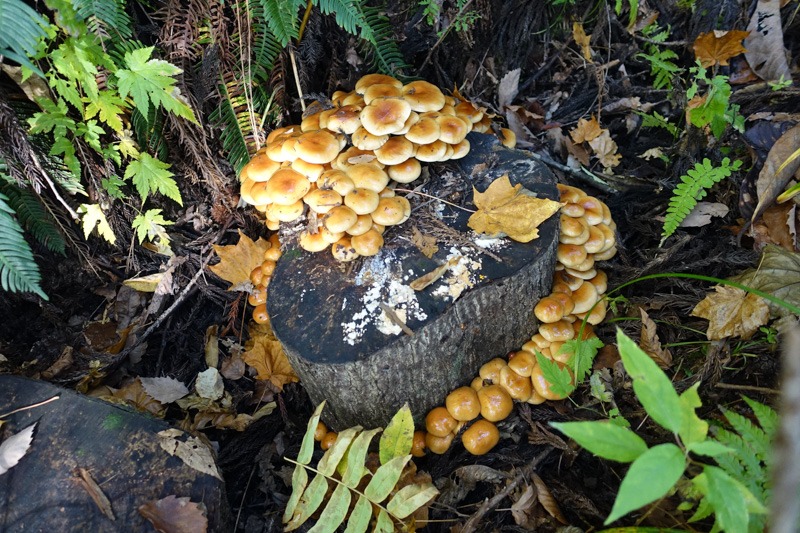
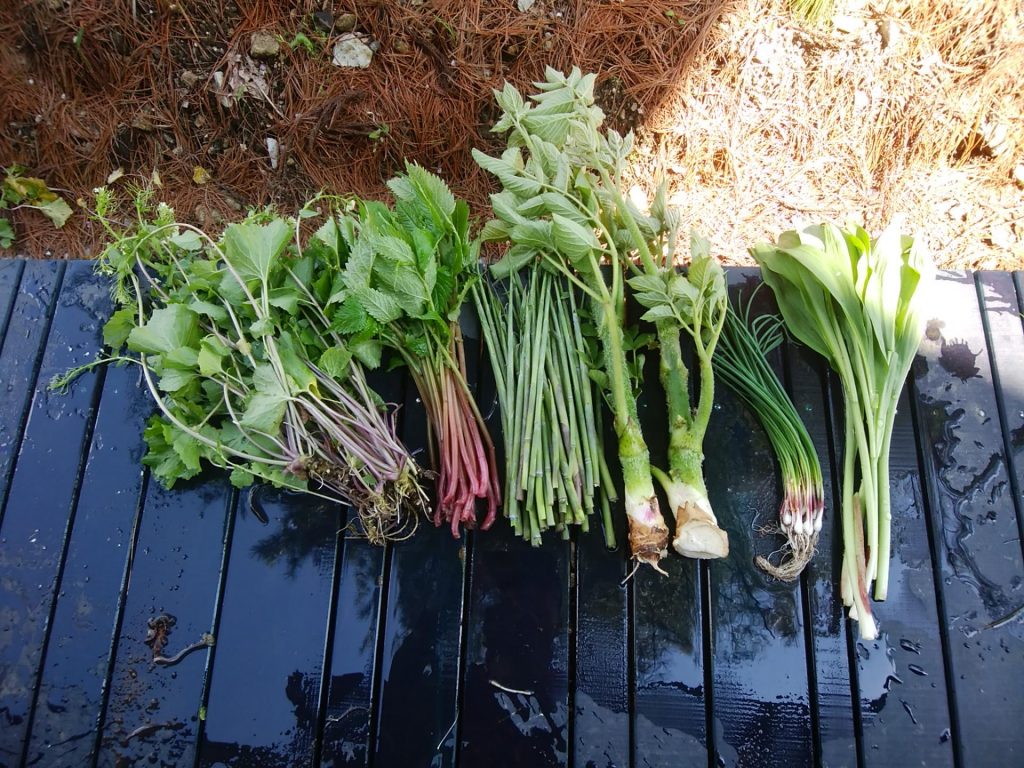
Oriyamake has garnered the attention of inbound visitors, and Oriyama hopes he can continue sharing the legacy of this local tradition when international borders open back up. He also hopes to hire young people and teach them about Matagi, as there has been increased interest. The guesthouse is open year round and offers a plethora of activities from mushroom picking in autumn, canoeing, stargazing, making local delicacies kiritanpo and butter mochi, knife making, animal tracking and barbecuing game they’ve hunted, such as deer and pheasants. To book your stay, visit Oriyamake’s website.

Highlights
Matagi Museum and Matagi-no-Yu
This museum displays authentic Matagi items such as hunting tools and clothing. The adjacent Matagi-no-Yu’s all-natural hot spring is fed directly from the source.
Akita Dog Visitor Center
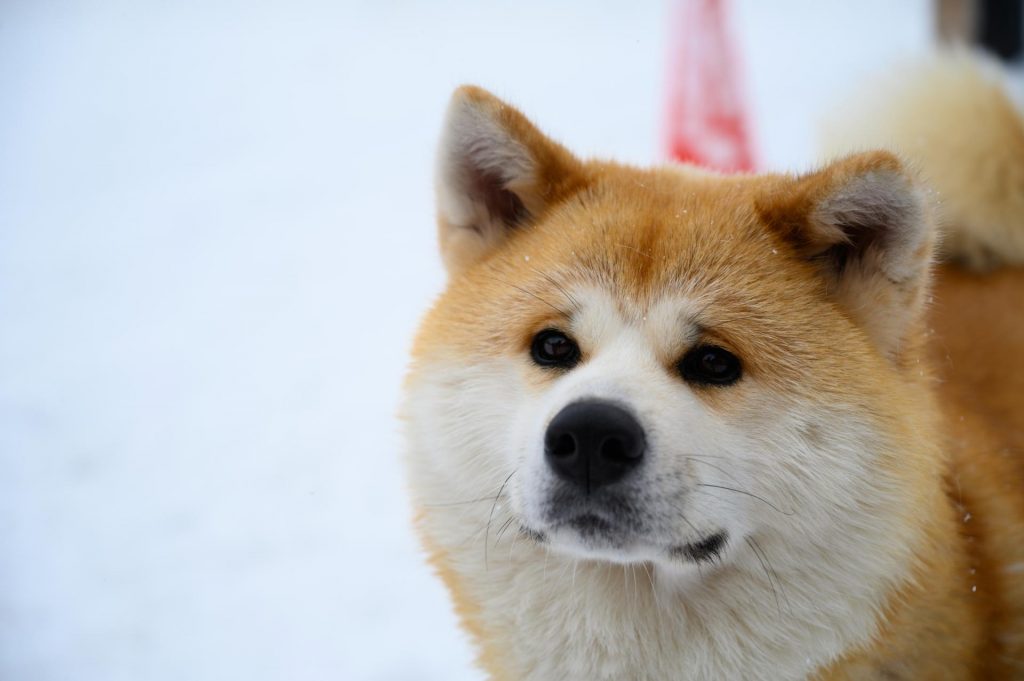
Animal lovers will recognize the name “Akita” from the famous Hachiko story. Akita dogs are large, powerful, yet affectionate dogs originating from the Odate area. In the past, they were used for guarding royalty and assisting on hunts. Located outside Odate Station, this center features a Akita dog museum, gift shop and, best of all, an area to meet the dogs themselves.
Mt. Moriyoshi
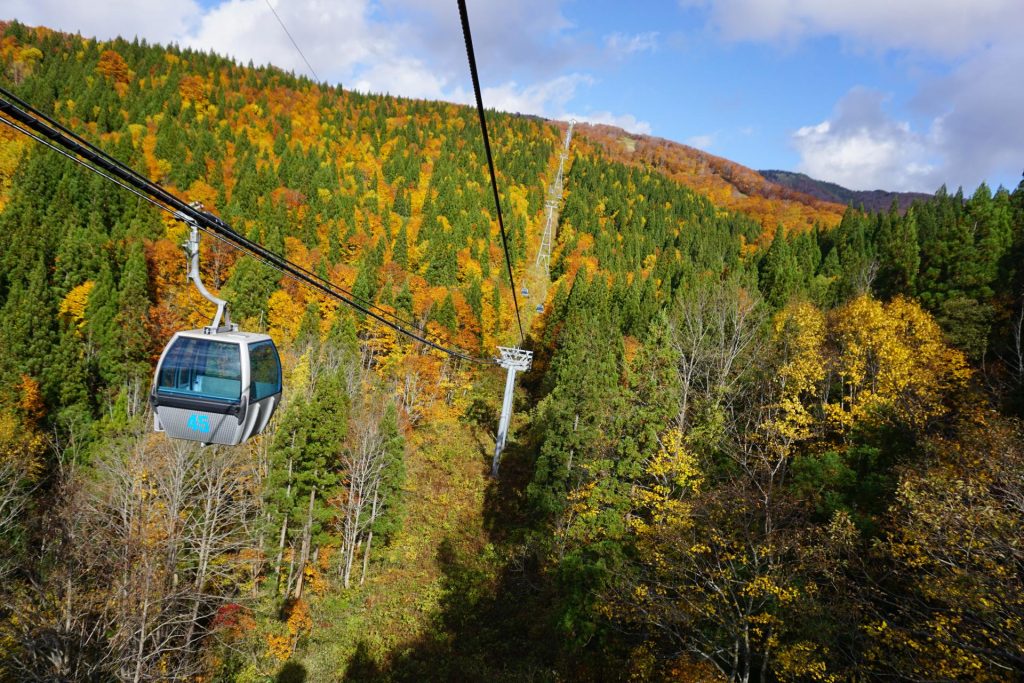
At 1,454 meters high, this mountain is one of the highest points in Akita and is famous for juhyou, “snow monsters” formed by ice sticking to trees making the forest look like a Yeti army. The best time to see this phenomenon is January and February at Ani Ski Resort. Other peak visiting seasons are May to July for the wild flowers and October for kouyou. Although closed in winter, Moriyoshi Ski Resort’s lift runs in the off season from 9 a.m. to 4 p.m. for hikers.
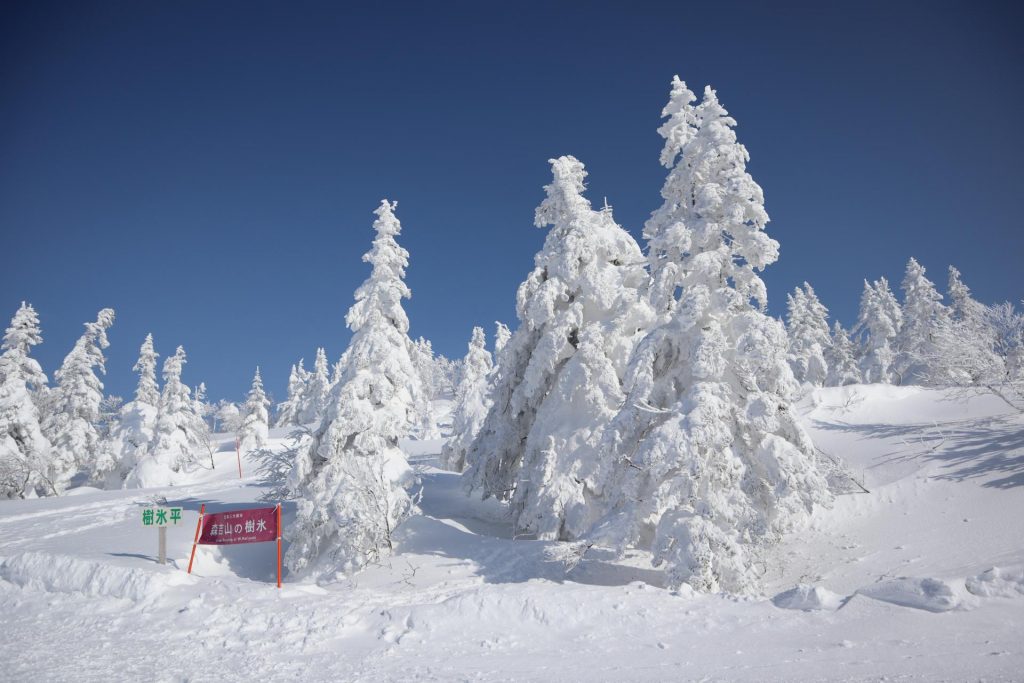
Ani Ski Resort
This hidden gem of a ski resort is located on Mt. Moriyoshi and has it all: powder, tree skiing, minimal crowds, and snow monsters in mid-winter. The ski season runs from early December to late March. Don’t forget to say hi to the resident Akita dog Hokuto.
Yasu Falls
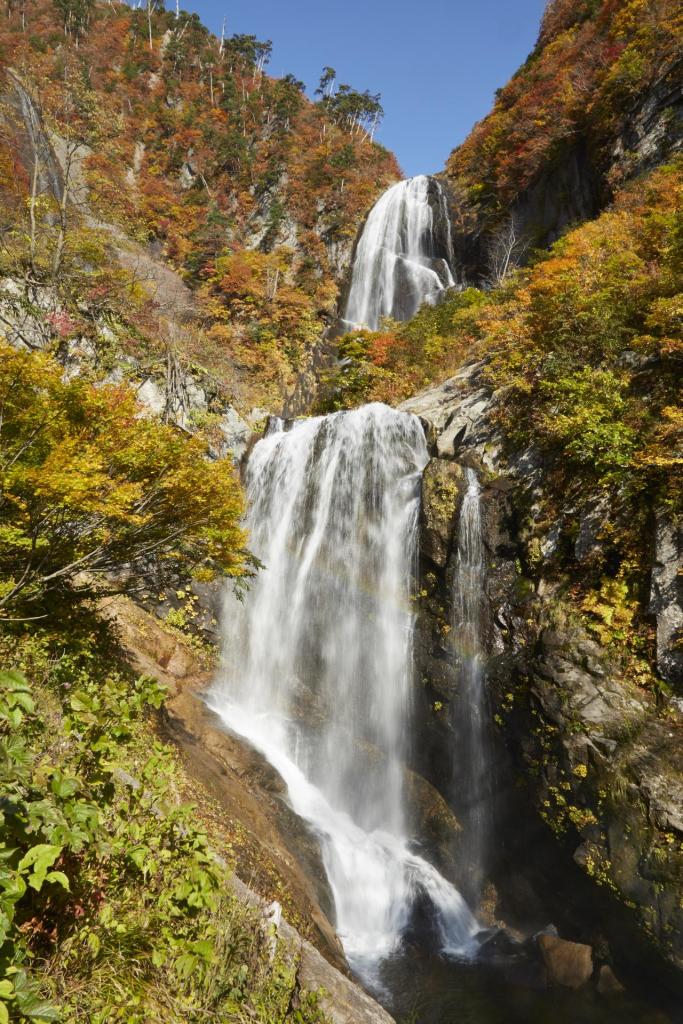
This two-tiered waterfall is a 90-meter drop in the upper reaches of the eight-kilometer stretch of Nakanomata Gorge. It is exceptional in early to mid-October during kouyou season when the leaves change color.
Lake Taihei
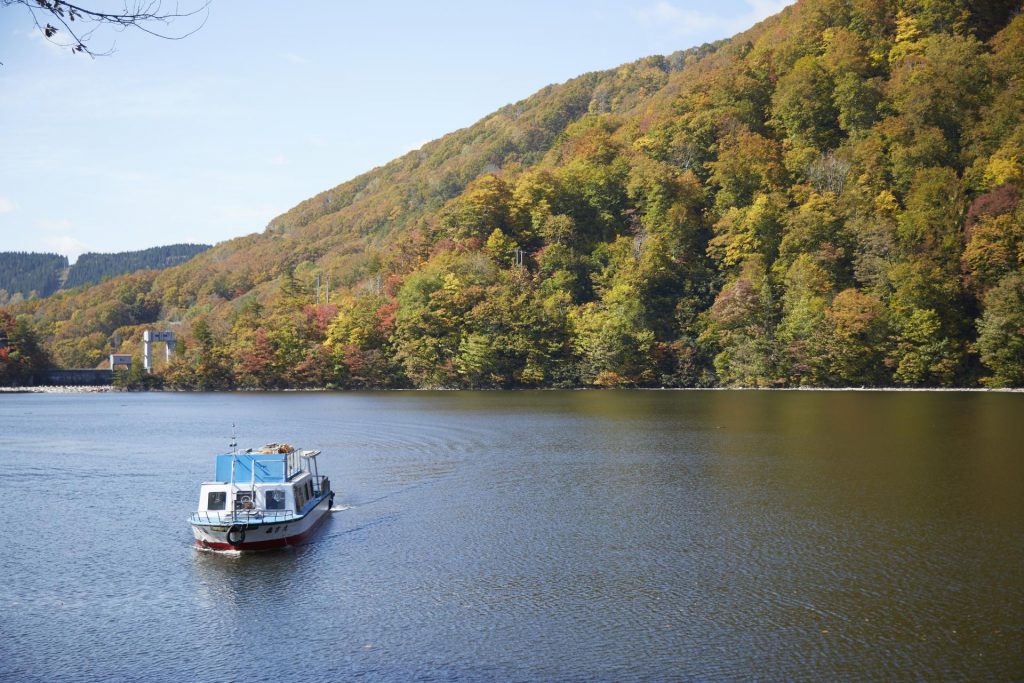
Another popular spot to view the autumn leaves is this artificial lake created along with Moriyoshi Dam. Anglers enjoy this lake for its abundance of cherry salmon, char, carp and pond smelt.
Local Delicacies


Warm up with kiritanpo, freshly cooked rice pounded and formed into cylinders, skewered and toasted. They are then served with sweet miso or stewed with meat and vegetables. Apples are also famous during this season.
Getting There
From Tokyo, Haneda Airport to Odate Noshiro Airport takes just 70 minutes. By shinkansen, take the Tohoku-Hokkaido or Akita bullet train to Morioka Station (two hours and ten minutes), then the Shuhoku bus for Odate (two hours and twenty minutes). You can also take the Tohoku-Hokkaido bullet train to Kakunodate Station, then take the scenic Akita Nairiku Line Railway (two hours and 30 minutes) to Takanosu Station. For more information, go to Akita Inu Tourism.
Matagi Akita Tohoku Sustainable Living
